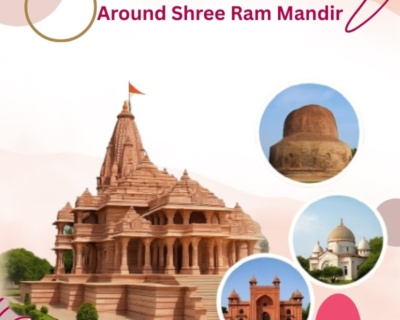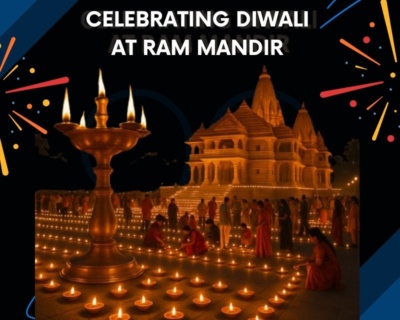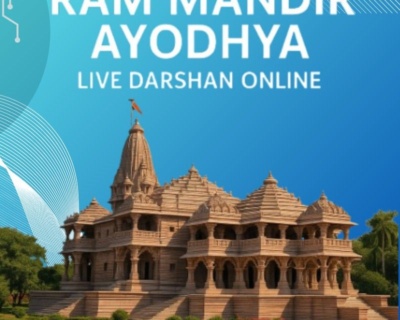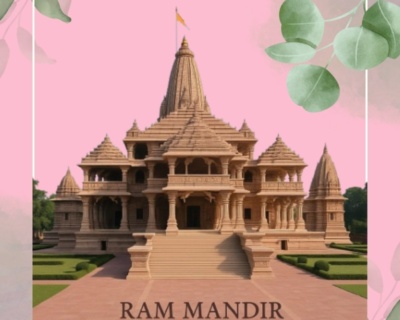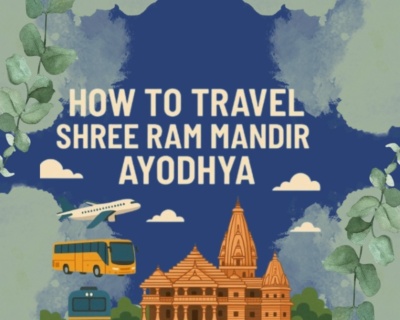Shree Ram Mandir Ayodhya: History & Timeline
- May 23, 2025
- Uncategorized
But Ayodhya hasn’t just been a city of peace and devotion it has also been at the heart of one of India’s most emotionally charged and politically significant movements the construction of the Shree Ram Mandir. The journey of this temple, from ancient reverence to legal battle and eventual consecration, is a compelling tale of faith, struggle and finally, fulfillment.Here’s a closer look at the rich and complex history Ayodhya the sacred city resting along the banks of the Sarayu River in Uttar Pradesh has always held a deep spiritual significance for Hindus across the world. It’s believed to be the birthplace of Lord Ram, one of Hinduism’s most revered deities, and the hero of the epic Ramayana. of the Shree Ram Mandir and how it came to stand tall in 2024.
The Spiritual Roots of Ayodhya
Ayodhya is more than just a city it’s a cornerstone of Hindu belief. According to the Ramayana, it was the capital of King Dasharatha and the birthplace of his son Ram, who is considered the seventh avatar of Vishnu.
Ram isn’t just a mythological figure he represents righteousness, justice, and ideal leadership. For centuries devotees have believed that a temple once stood at the exact site of his birth known as Ram Janmabhoomi.
The Arrival of Babri Masjid
The turning point in Ayodhya’s long story came in 1528 when the Mughal general Mir Baqi, under emperor Babur’s rule is said to have constructed the Babri Masjid on the Ram Janmabhoomi site. Many Hindus believe this mosque was built after demolishing the original Ram temple that marked Lord Ram’s birthplace. This belief became the root of a conflict that would stretch across centuries. Though the site remained largely peaceful for generations, British colonial records from the 19th century reveal disputes between Hindu and Muslim communities over access and worship rights.
1949: When Tensions Rose
In December 1949, idols of Lord Ram and Sita were placed inside the central dome of the Babri Masjid. This led to massive public unrest. While Hindus considered it divine intervention, Muslims called it a violation. The government declared the site disputed and locked its gates, allowing no religious activity inside the structure.
This marked the beginning of legal proceedings over ownership and access.
The Movement Gains Momentum
During the 1980s, the Ram Janmabhoomi movement began gaining strength, driven by Hindu organizations like the Vishwa Hindu Parishad and receiving political backing from the Bharatiya Janata Party (BJP). A turning point came in 1986, when a district court ordered the gates of the Babri Masjid to be reopened, allowing Hindu devotees to enter and offer prayers. This decision sparked renewed communal tensions and brought the long-standing dispute into the national spotlight.
1992: A Day That Changed India
On December 6, 1992, a massive crowd of over 100,000 activists, known as kar sevaks, gathered at the Babri Masjid site during a political rally. What started as a demonstration soon turned violent. Within hours, the centuries-old mosque was demolished. The destruction led to widespread riots and communal violence across the country, claiming more than 2000 lives. The incident left a deep scar on the nation, polarizing public opinion and reshaping the landscape of Indian politics and society.
The Long Road Through the Courts
Following the demolition, numerous legal cases were filed over the ownership of the land. In 2010, the Allahabad High Court delivered a landmark judgment it divided the land into three equal parts one each for the Hindu deity Ram Lalla, the Sunni Waqf Board and the Nirmohi Akhara. However, none of the parties accepted this arrangement. The matter eventually reached the Supreme Court of India, which heard the case in depth.
The Landmark Supreme Court Verdict
9 November 2019 – Final Verdict
A five-judge bench of the Supreme Court of India delivered a unanimous verdict:
The entire 2.77-acre disputed land was awarded to Ram Lalla Virajman for the construction of the temple.
The court directed the government to allot 5 acres of alternative land to the Sunni Waqf Board in Ayodhya for building a mosque.
The verdict acknowledged the ASI report, religious belief, and legal documents in delivering a balanced and historic decision.
The judgment was widely welcomed as a peaceful resolution to a decades-long dispute.
2020: Bhumi Pujan and the Start of Construction
On August 5, 2020, Prime Minister Narendra Modi performed the Bhumi Pujan at the temple site. The event was broadcast across the country and marked the beginning of a new chapter in Ayodhya’s history.
The temple’s construction became a nationwide project, supported by donations from millions of devotees in India and around the world.
The Architecture of the Ram Mandir
The design of the temple is a blend of traditional Nagara style of temple architecture with intricate carvings and spiritual symbolism. Key features include:
Height: Over 161 feet
Dimensions: 360 feet long, 235 feet wide
Structure: Three floors with five mandaps (halls)
Main Sanctum: Houses the idol of Ram Lalla
Material: Carved pink sandstone from Rajasthan, with no use of iron or steel
Interestingly no iron or steel is being used in the construction a nod to ancient temple-building techniques. The temple complex will also feature a museum, research center, Yagyashala, and pilgrim accommodations.
2024: Pran Pratishtha and the Inauguration
The grand inauguration of the Ram Mandir took place on January 22, 2024, with the Pran Pratishtha of the new idol of Ram Lalla.
The idol, sculpted to depict a five-year-old Ram, was installed in the sanctum sanctorum of the temple in a deeply spiritual and nationally celebrated event.
Prime Minister Modi attended the ceremony along with seers, priests and dignitaries. Millions across India and the world watched the event live marking the end of a centuries long wait.
Timeline Key Events of Ram Mandir
YEAR
EVENTS
1528
Babri Masjid constructed
1853
First recorded clashes over the site
1949
Ram idols appear inside Babri Masjid.
1986
Court reopens mosque gates for Hindu worshippers.
1992
Babri Masjid demolished by kar sevaks.
2010
Allahabad High Court divides the land.
2019
Supreme Court grants land for Ram temple.
2020
Bhumi Pujan ceremony performed.
2024
Ram Lalla consecrated in new temple.
More Than Just a Temple
For millions of Hindus, the Ram Mandir is more than just a physical structure it’s a deeply emotional, spiritual, and cultural landmark.
It represents the triumph of patience and belief, of law over chaos, and of harmony over conflict. Lord Ram is not just a deity he’s a symbol of how to live an ideal life. The temple stands as a tribute to those values.
It’s also a reminder of how complex and plural India is where religion, law, history, and democracy constantly interact and evolve.
Final Thoughts
The story of Shree Ram Mandir is a rare blend of mythology, history, politics, and devotion. It reflects India’s ability to resolve even the most challenging issues through dialogue, law, and faith.
With the temple now open to devotees, Ayodhya is once again a glowing symbol of spiritual glory just as it was in the times of the Ramayana.
As pilgrims walk into the grand temple and chant Jai Shri Ram they’re not just stepping into a sacred space they’re stepping into a living legacy.



